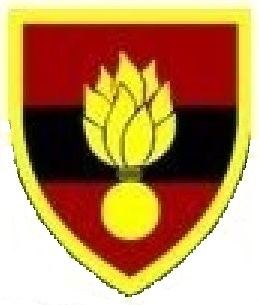The South African Army Engineer School is part of the South African Army Engineer Formation, which specifically trains for army engineering tasks.
In 1946, an Engineer Training Wing was established at what was then the Military College, now the SA Army College. In 1964 the post of GSO2 Engineers was filled full-time by a Regular Force Officer. In 1948, the Wing was moved to Potchefstroom, where it became the Engineer Wing of the SA Army Artillery and SA School of Armour. In 1968, it was transferred to Kroonstad as the Engineer Training Centre. In 1969, it became the School of Engineers.
Basic skills of military engineers is taught to all students, which is focused on combat:
Mine warfare,Basic field engineering,Use of Power tools,Field defence,Water purification,Water provision,Watermanship as well asBridge building,These modules take 18 weeks to complete. Recruits arrive in January and graduate in September.
Recruits are then assigned to the following units for the various types of engineering disciplines:
2 Field Regiment: (based in Bethlehem), to become combat engineers,1 Construction Regiment: (based in Nigel), to become construction machine operators,Engineer Terrain Intelligence Regiment: (based in Pretoria); or35 Engineer Support Regiment: (based in Nigel)South African Combat Engineering includes:
The construction of roads, bridges, field defence and obstacles, water points, helipad construction, route reconnaissance, and erecting communication
Rigging, the use of explosives for the carrying out of demolitions, obstacle clearance and assault of fortifications.
Use of assault boats in obstacle crossings.
Construction sappers are responsible for establishment of operational infrastructure for the South African Army, i.e. operational bases, roads and airfields. Functions include:
ArchitecturalCivil EngineeringElectrical ServicesBuildersCarpentersElectriciansPlumbersThe Engineer School runs about 100 training courses and many of the skills taught are directly relevant to the national economy. Trades taught and employed by include:
Bricklaying,Carpentry,Construction machine operation,Draughting,Electricians,Geographic information specialists,Surveying andWelding.Corps Training Course (701 ENGR 006): designed to equip a field sapper with the general military engineering skills and knowledge to obtain the main objective of engineering, namely survivability of own forces, general engineer tasks and denial of enemy mobility. This learning programme is presented to members with the rank of sapper and is the foundation course for all engineer officers.Troop Officers Course (701 ENGR 103): designed to train combat engineers who have been selected by the Engineer Formation Officers Selection Board for officer training at the SAEC. This training ensures that combat engineers could be utilised in posts as troop officers in the Field Engineer Regiment, and, during operational conditions, within the Field Squadron. On successful completion, the learner has to plan and execute field engineer tasks, such as terrain analysis, at sub-unit or squadron level. The learner has to function as a troop officer and to assist the troop commander of the SAEC at sub-sub-unit level.Troop Commanders Course (701 ENGR 16): designed as a part of the training programme for all SAEC officers with the rank of lieutenant in the disciplines required to act as troop commanders in the SAEC. These members are required to have completed the SAEC Troop Officers Course successfully in order to be accepted for this course. Upon successful completion of this learning programme, learners are able to plan and execute all combat engineer tasks and to gather information during reconnaissance as part of the responsibility of troop commander within the engineer squadron. The learner is equipped to act as an SO3 engineer and to function in a compartment of a formation.Squadron Commanders Course (701 ENGR 17): designed to train SAEC officers with the rank of captain. The aim of this programme is to ensure that SAEC captains can be utilised in posts as SAEC squadron commanders in the Field Engineer Regiment, and prepare them for the integrated Sub-Unit Commanders Course. The members are required to have completed the SAEC Troop Officers Course, the advanced bridge-building course and the equipment orientation course successfully in order to be accepted for this course. Upon successful completion of this, the learner would have been able to act as a Field Section Leader in the Field Engineer Regiment during operations.
